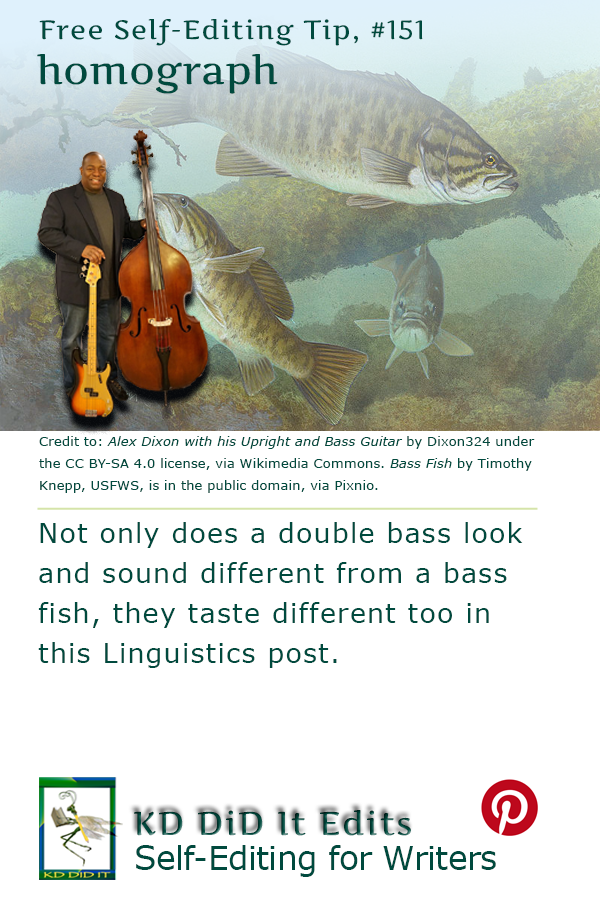Revised as of
7 Mar 2023
A type of linguistic word play, a homograph is a subset of homonym and comprises one or more words (one word is the most common).
If you break homograph apart:
Homo- means same
-graph means drawn or written
This means a homograph is written the same way — has the same spelling. It may or may not sound the same, and it will definitely mean something different.
If the homograph is spelt the same, then it is also a homonym; if it has a different spelling, then it’s a heteronym.
The primary concern for a writer is the possibility of choosing a word with one meaning while thinking it means something else. Choosing the wrong word that doesn’t suit the context, could provide comprehension problems for readers, which can affect your reputation and book sales.
Linguistics and Word Confusions sometimes . . .
. . . combines the systematic study of the nature, structure, and variation of language (of which grammar is a part), which describes how people use language while the Word Confusion is a pair (or more) of words that are confused spelling-wise with each other. Combining these two categories keeps writers aware of how words are used (or spelled!) determining a character’s social and educational level and the time period for the story.
As I discover more examples, also-known-ases, and additions, I’ll update this post. If you have a suggestion, I would appreciate you contacting me. If you found this post on “Homograph” interesting, consider Homograph to KD Did It, if you’d like to track this post for future updates.
C’mon, get it out of your system, bitch, whine, moan . . . which words are your pet peeves? Also, please note that I try to be as accurate as I can, but mistakes happen or I miss something. Email me if you find errors, so I can fix them . . . and we’ll all benefit!
Satisfy your curiosity about other Linguistics posts by exploring its homepage or more generally explore the index of self-editing posts. You may also want to explore Book Layout & Formatting Ideas, Formatting Tips, Grammar Explanations, the Properly Punctuated, Word Confusions, Writing Ideas and Resources, and Working Your Website.
Resources for Homograph
Moore, Carol. “Explanation of Homonyms, Homophones, Homographs, and Heteronyms.” Buzzy Bee Riddles. n.d. Web. n.d. <http://www.magickeys.com/books/riddles/words.html>.
Skillin, Marjorie E., Robert M. Gay, and other authorities. Words into Type. Third edition. New Jersey: Prentice-Hall, Inc: 1974. <https://amzn.to/3YCK74z&g; Print.
Pinterest Credits
Alex Dixon with his Upright and Bass Guitar by Dixon324 under the Bass Fish by Timothy Knepp, USFWS, is in the public domain, via Pixnio and was flipped in Photoshop.


